Having a strong and healthy roots system is crucial for any kind of crop. This also applies to sweet pepper plants, of course. At the start of cultivation, the development of the roots should be properly controlled. On the one hand, this is done by letting the roots "seek" the water. The moment the young fruits hang on the plant, it shows that root development decreases sharply. The sugars then go directly towards the young fruits. In other words, too early a fruit set is at the expense of the roots. Therefore, it is common practice to at least split the first and second axils cleared of flowers, to direct the sugars from the plants more towards the roots at the beginning of cultivation.
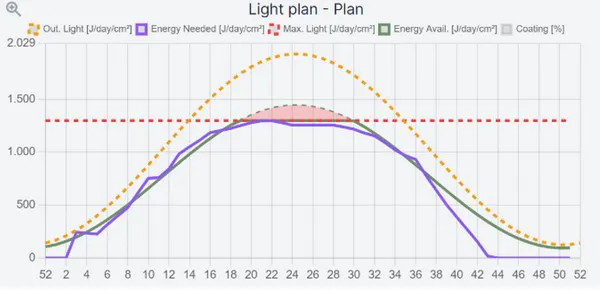
Above: the light plan graph and the graph of planned fruit set and planting load
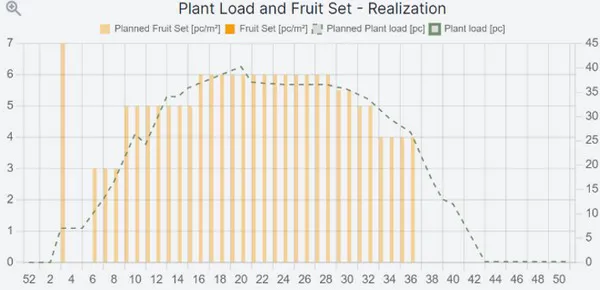
Especially in countries where there is little light present in winter, very generative control is often used to get the first set on the plant. This is done by making larger day and night differences in greenhouse temperature and opening the energy screen more often. But reducing the water content in the substrate is also widely used. This is often started the moment the plants are well-rooted. Lowering the water content encourages the plant to develop stronger buds and flowers. If there is then enough light, new fruits will spontaneously appear on the plants.
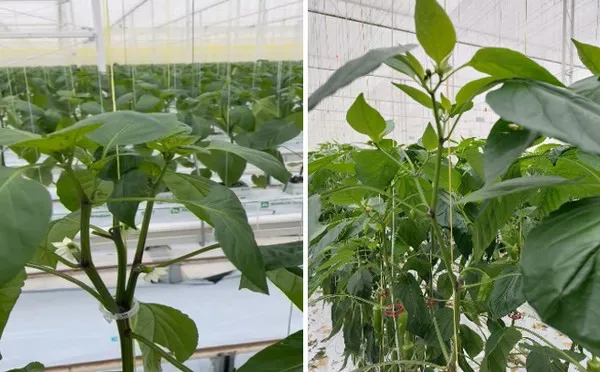
Above and below: A good start is half the work, the basis of cultivation
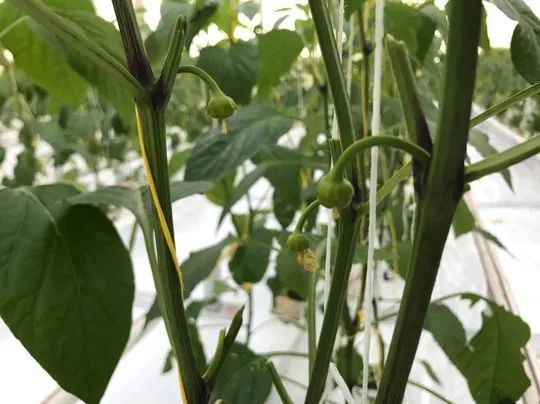
During the winter period, days with low light alternate with days with more sunshine. Due to the often strong generative control, even in a period with several sunny days there can be too many new fruits on the plant. This often presents a challenge what to do with this? Too many fruits to develop in this period will take a lot of energy away from the growth of the crop and the roots.
This already immediately creates a chance of imbalance in the crop. Imbalance in the pepper crop is more common than what we would like. Where the first setting leaves too many fruits on the plants, the second setting will be able to stay away longer. Then, if the outside light also fails, the gap between the first and second fruit setting gets even bigger. Sometimes we see 4 to 5 empty axils. Another disadvantage of shock-setting is getting a weaker root system, which is also more sensitive to Pythium.
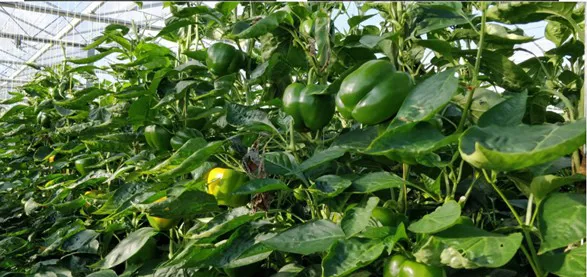 Regular growth gives the best end result
Regular growth gives the best end result
It is also noticed that there are periods during the season with more and less outdoor light per day. "From ProJoules, we often hear that, depending on the desired fruit size, a certain maximum planting load is desired," the ProJoules team says. With a minimum desired fruit weight of 200 grams, a plant load of 40+ pieces per m2 in the period when we get above 1600 Joules of outdoor light per day is already undesirable. It is also known that if the planting load is too high, growth decreases too much. When the energy demand then decreases again, there may be too much vegetative growth with excessive flowers. The risk of blossom-end-rot fruits in an unbalanced crop is therefore much higher. By better planning and recording a crop, growers get much better insight into the performance of their crops. This makes it easier, but also more substantiated, to steer the crop.
For more information: 
ProJoules
+31 6 51042740
info@projoules.com
www.projoules.com
